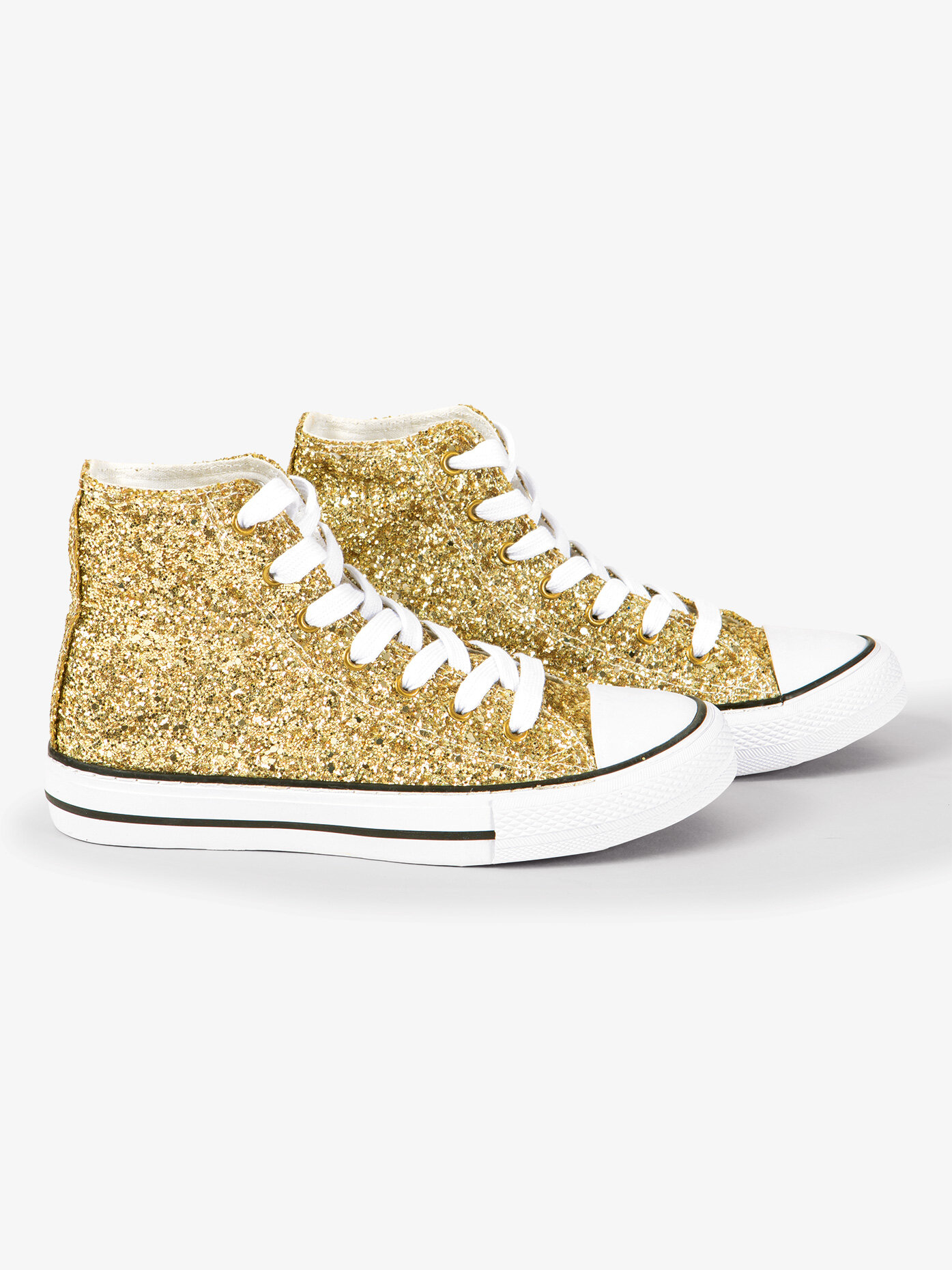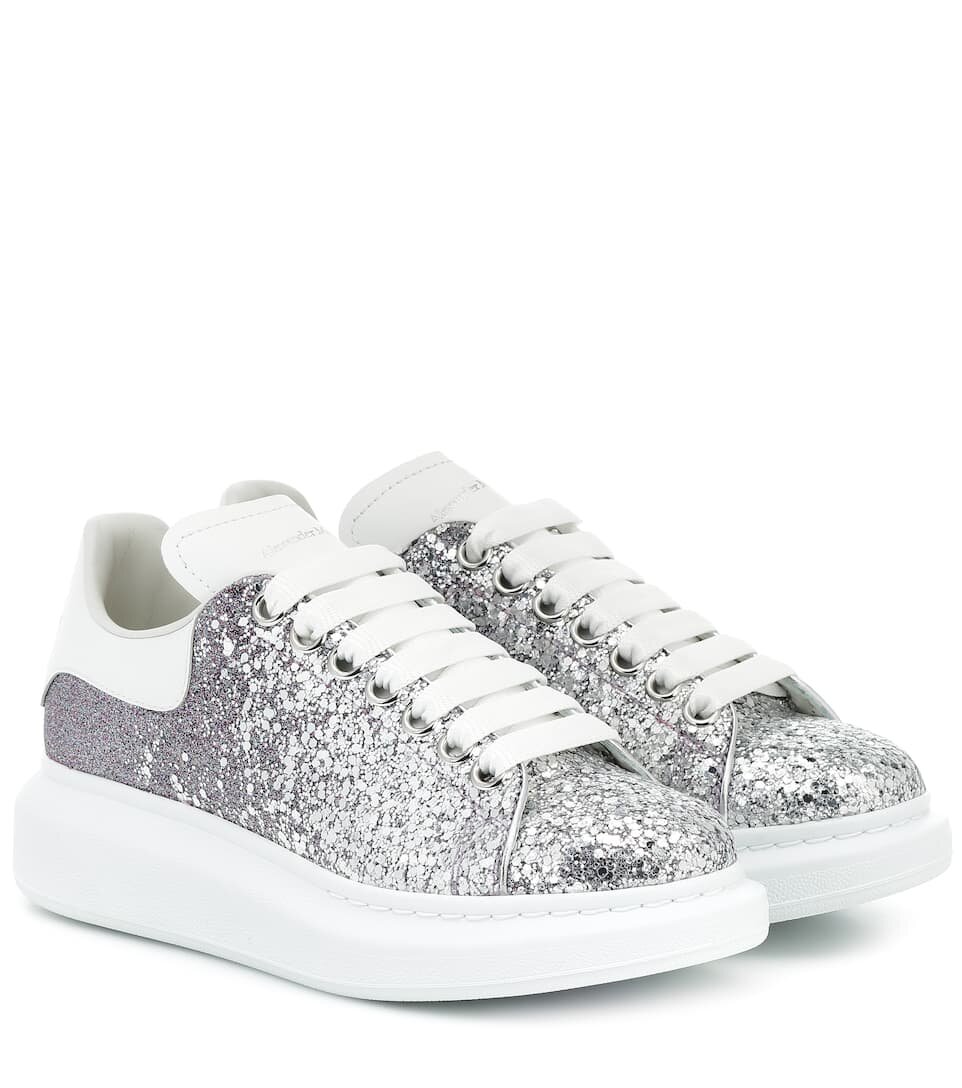All About the *Glitter* Sneakers
Throughout middle school, I was often teased and taunted for my favorite footwear choice: a pair of pink Golden Goose glitter sneakers. My peers labeled me “Barbie” and “Disney princess,” and for a few months—in a desperate attempt to stop the bullying and fit in—I relegated the shoes to the back of my closet. I began to change the way I dressed, wearing basic white Adidas or black Converse basketball high tops with every outfit. Sure, I looked like I belonged, but I didn’t feel like myself anymore. Over time, however, I recognized the power that my special shoes possess. Similar to Dorothy’s iconic ruby red shimmering pumps, glitter sneakers epitomize the power of the female to control her destiny. They are a style representation of the person I strive to be: bold, exciting, fearless, and unapologetically herself.
Classic sneakers can be traced back to the late 18th century, when lower-class citizens sported plimsolls, canvas shoes with rubber soles. Around 1892, sneakers began to receive the public’s attention thanks to the introduction of Keds, a company that produced and manufactured sneakers. Throughout the 20th century, sneakers became a staple athleisure accessory when Germany native Adi Dassler launched Adidas shoes named after himself. Indeed, the shoe was worn by renowned athletes across the world, including Jesse Owens, who donned them to win four gold medals for track at the 1936 Olympics.
A year later, in 1934, plastic glitter was invented as well, although many did not draw a connection between the shiny particles and sneakers at the time. Glittering surfaces have existed for approximately 30,000 years, as flakes of mica (a silicate mineral) were used in ancient times to make cave paintings gleam. Humans from the prehistoric era are thought to have used another glitter-esque mineral called hematite—they may have adopted it in its powdered form for cosmetic purposes. When American machinist Henry Ruschmann discovered that plastic of mylar sheets could be cut to form plastic glitter in the 20th century, however, it began to be used for modern purposes. Ruschmann soon founded Meadowbrook Inventions Inc., an establishment that still reigns as the world’s leading glitter manufacturer. Throughout the century, glitter had significant ties to the entertainment industry as well: legendary singers David Bowie, Gary Glitter, and Iggy Pop used it as a means of self-expression since the shimmer served as a symbol of the glam rock music style. Typically associated with femininity, the male artists’ adaptations of glitter had significant social implications, emphasizing androgyny and gender fluidity.
Amid a “third wave” feminist movement, as women become more comfortable and confident in projecting their voices and demanding to be heard, there’s no better time to merge the classic sneaker with attention-getting glitter. In 2017, Converse updated their classic Chuck 70 sneaker with an all-over, glitter-adorned style in collaboration with J.W. Anderson, a partnership that received national attention for its exciting designs. In addition, British fashion house Alexander McQueen now sells platform sneakers in a variety of glimmering options: blue glitter, glitter multi/white, pink glitter, white/navy glitter and rose glitter.
Although I still get the occasional snide mark about my glitter sneakers, I try not to let it get to me and instead indulge in the “extra.” This past decade, women have exerted their individuality and power in many ways, a direct response to our nation’s political discontent as well as the Time’s Up and Me Too movements. Women are fighting for equal pay, equal rights, and greater respect, and our glitter sneakers have an undeniable ability to reflect that.






